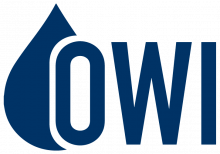Welcome
Welcome to the U.S. Geological Survey’s Office of Water Information’s new blog. We are committed to advancing USGS science by integrating data across scales and domains, improving access to data and research, developing tools for analysis and visualization, and fostering collaboration with the international water informatics community.
The blog posts here represent “non-interpretive” or “interpretive, but not new” information. This is fancy lingo to indicate that nothing posted here will be interpreting data or findings in new ways. That sort of information needs to be published in a more rigorous outlet (for example, a peer-reviewed scientific journal article).
The Office of Water Information has a wide variety of services available to improve the access and understanding of US water information. Blog posts will highlight data, developments, and applications of these services.
So why do we blog?
- Raise awareness of new software development & analytics at USGS
- Engage with the public and other agencies
- Share ideas and get feedback
- Get more in-depth than Twitter, but share faster than apps & websites
Categories
There are currently 3 categories: Data Science, Applications, and Software Development.
Applications
OWI runs about 40 different applications, from enterprise scale data assimilation, management, and dissemination systems including the National Water Information System to project-scale data analysis tools that serve more specialized needs.
Blogs in this category will provide updates, interesting applications, user-stories, or other information on the various applications produced and maintained by the Office of Water Information at USGS.
Software Development
Blogs within the “Software Development” category will showcase innovative work being done on a wide variety of software engineering topics and platforms.
Data Science
Data science is an emerging field both inside and outside the USGS. Data scientists build tools and software that enable reproducible data & modeling pipelines. OWI data scientists collaborate with other scientists to design, implement, and communicate reproducible workflows for earth science (primarily water science). Posts in this category will show workflows for processing and analyzing data.
The development of these tools is closely coordinated with USGS enterprise information systems providing convenient access to USGS monitoring data within various data analysis environments.
Communication
There are several ways to keep up to date on the work that is done at OWI, and to provide feedback.
Twitter Github Follow @USGS_WaterData https://github.com/USGS-OWI Follow @USGS_R https://github.com/USGS-R Follow @USGS_GDP https://github.com/USGS Follow @USGS_PubsLinks
Description Link Main USGS page https://www.usgs.gov/ Office of Water Information https://owi.usgs.gov/ USGS Water Services http://waterservices.usgs.gov/ USGS Water Data for the Nation http://nwis.waterdata.usgs.gov/ Water Quality Portal http://www.waterqualitydata.us/ USGS Publications Warehouse https://pubs.er.usgs.gov/ National Water Census - Data Portal http://cida.usgs.gov/nwc/ USGS Geo Data Portal http://cida.usgs.gov/gdp/ National Ground-Water Monitoring Network http://cida.usgs.gov/ngwmn/ USGS Coastal Change Hazards Portal http://marine.usgs.gov/coastalchangehazardsportal/ Environmental Data Discovery and Transformation http://cida.usgs.gov/enddat/ Pilot National Soil Moisture Network http://cida.usgs.gov/nsmn_pilot/Technical Details
A few details concerning the blog itself. It is produced using Hugo. The basic “robust” theme was used as a base, but fairly straightforward modifications were done to comply with OWI website styles. The development and collaboration on blog posts is done via Github at https://github.com/USGS-OWI/owi-blog.
Each blog post is created in a simple markdown format. Posts are deployed to a development Amazon S3 bucket using the continuous integration tool Jenkins. When a pull request is merged on github, a Jenkin’s job pulls the github repository, builds the Hugo site, and pushes the generated static files from the “public” folder to the development S3 bucket. Once the post has been reviewed for style and content, the status draft: true is removed. A production deployment is also done via Jenkins.
Questions
Please direct any questions or comments about the blog to: https://github.com/USGS-OWI/owi-blog/issues
Disclaimer
“Any use of trade, firm, or product names is for descriptive purposes only and does not imply endorsement by the U.S. Government.”

